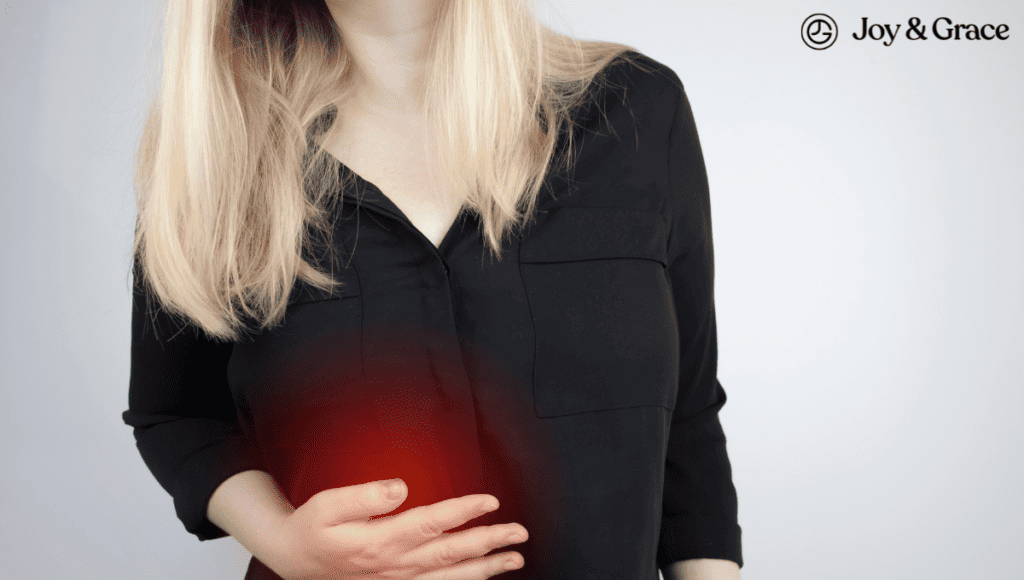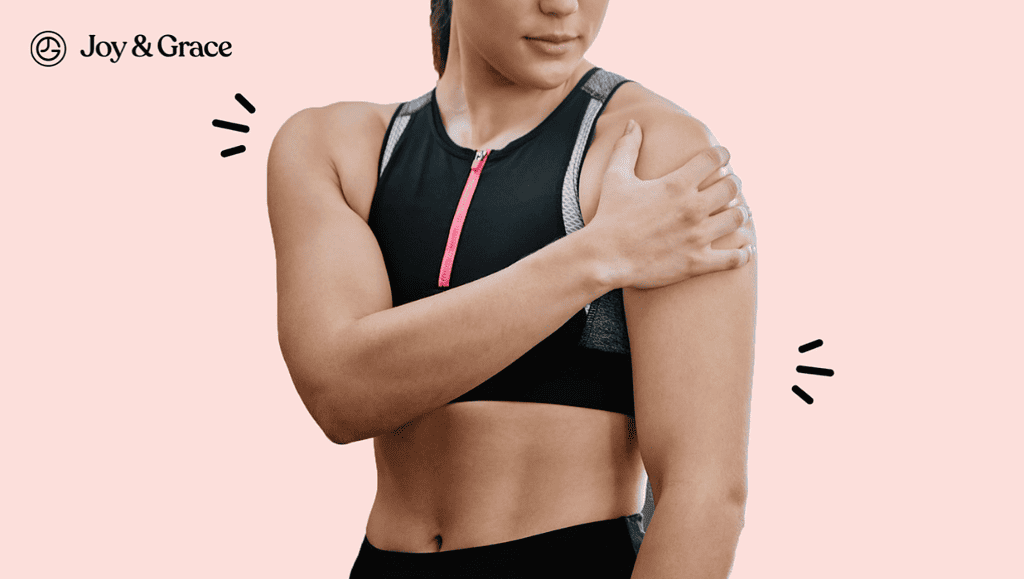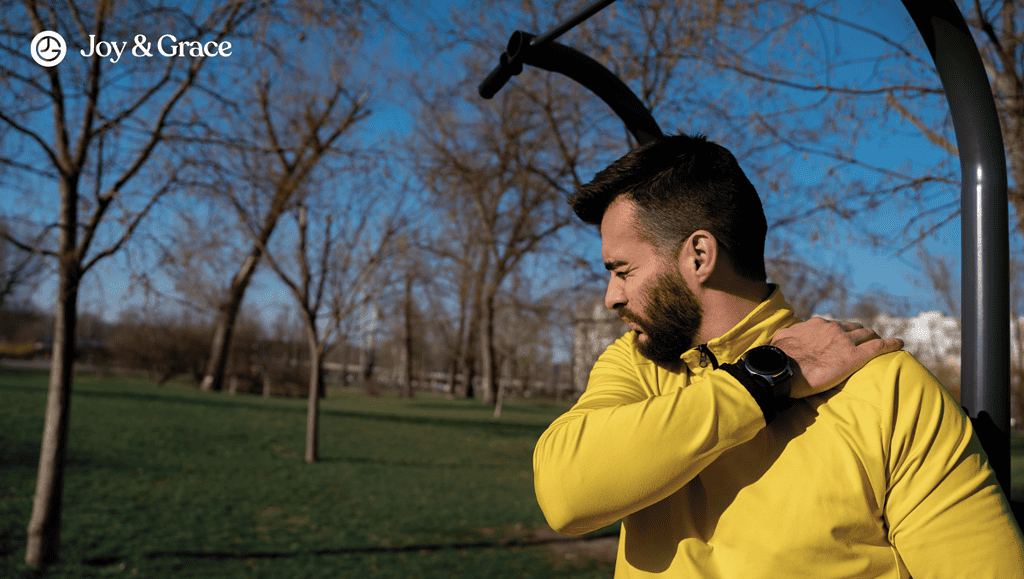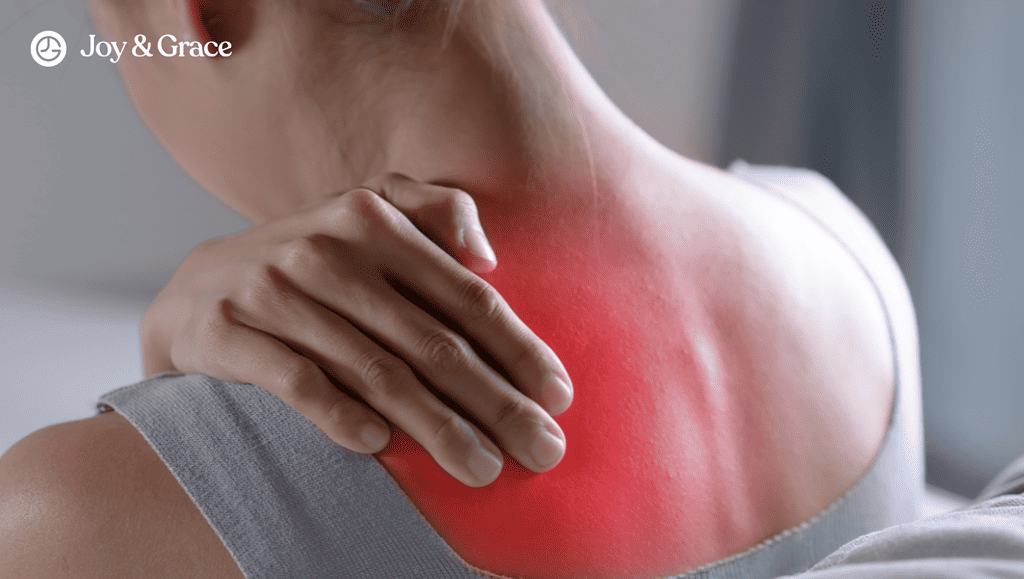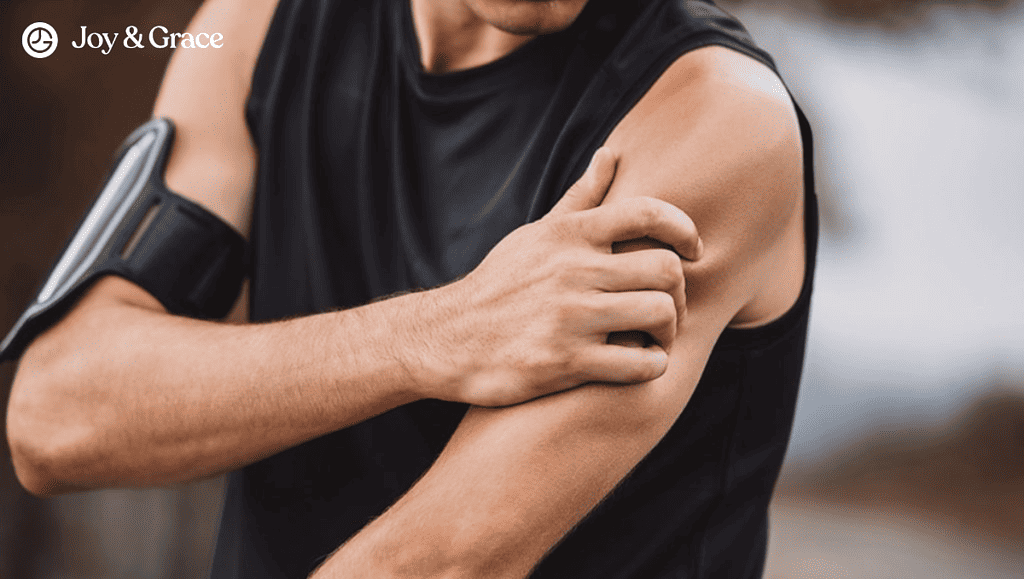According to the American Academy of Sleep Medicine, 26% of adults aged 30 to 70 have sleep apnea. If you suffer from sleep apnea, you know how important it is to use Continuous Positive Airway Pressure (CPAP) therapy.
However, while CPAP therapy can bring much-needed relief, it can also have side effects, including neck pain. CPAP neck pain is a common complaint among CPAP users, and it can occur for various reasons. The good news is that CPAP neck pain is manageable, and there are steps you can take to alleviate your discomfort.
By the end of this article, we hope to provide you with practical solutions that will help you sleep soundly and comfortably.
Can A CPAP Mask Cause Neck And Shoulder Pain?
A CPAP mask can indeed cause neck and shoulder pain.
In fact, neck and shoulder pain among CPAP machine users is a commonly reported side effect. This discomfort can be mainly attributed to the weight of the CPAP mask.
First, the mask’s weight itself. The mask's weight can cause the head to tilt forward or sideways, leading to strain and discomfort in the neck and shoulders.
Second, sleeping positions. The mask can force you to move your head into uncomfortable positions. You may be doing this to find a position that allows you to sleep comfortably while preventing leaks. This can lead to discomfort, pain, and even long-term spinal problems.
Finally, the mask straps. The straps on a CPAP mask can also contribute to neck and shoulder pain. The headgear straps holding the mask can be tight and cause discomfort. This is especially true if they're not adjusted properly or if the straps are worn out and need to be replaced.
That said, it’s important to note that not all people will experience neck and shoulder pain from a CPAP mask. In fact, the neck pain may not be from your mask at all, but a symptom of sleep apnea.
Can CPAP Cause Neck Problems?
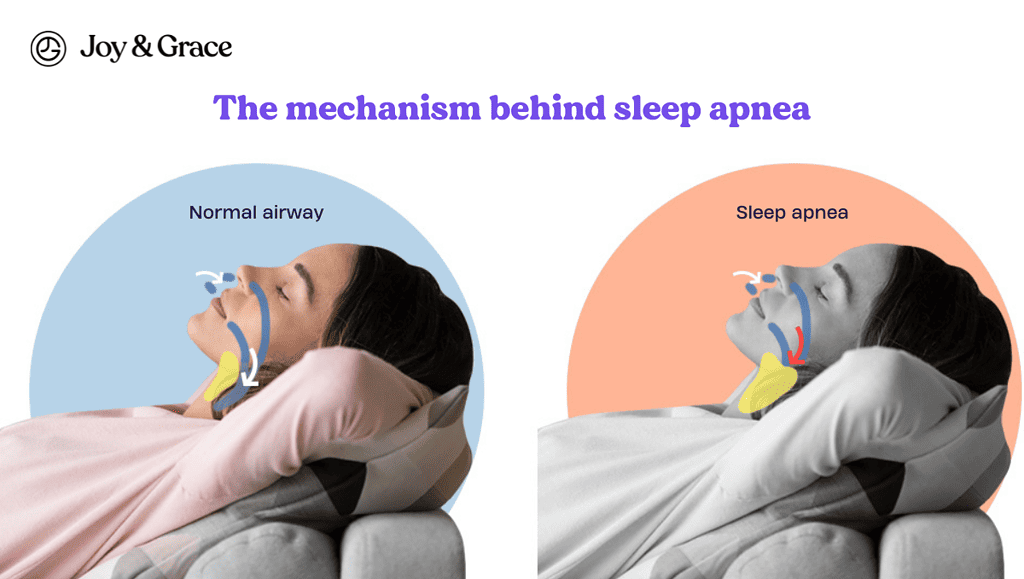
It's important to note that CPAP therapy is not typically considered a cause of long-term neck problems. We only found one study that suggests CPAP therapy can cause neck problems.
According to the study, CPAP lowers the pressure pain threshold of your neck and shoulder muscles. This means it takes less pressure for your neck and shoulder muscles to feel pain.
Another reason why you might feel CPAP is causing neck problems has to do with perception. You may mistakenly attribute your neck problems to CPAP therapy when, in fact, the pain may have already existed priorly.
According to a scientific review, problems and diseases affecting the cervical spine may actually be a factor in developing sleep apnea. This includes rheumatoid arthritis, for example.
According to another study, problems in the cervical spine that reduce the size of the retropharyngeal space are also associated with obstructive sleep apnea.
The retropharyngeal space is a narrow area behind the throat and in front of the cervical spine (neck bones). It is an important space because it houses structures such as the pharynx (throat), the esophagus (food pipe), and the trachea (windpipe).
When this space narrows, it may cause your airway to collapse and lead to sleep apnea.
The bottom line is: CPAP therapy is unlikely to cause long-term neck problems, even if it may make neck and shoulder muscles more sensitive to pain. Pre-existing neck issues may be a more common cause of the pain than CPAP therapy.
Do I Wake Up With Neck Or Shoulder Pain With Sleep Apnea?
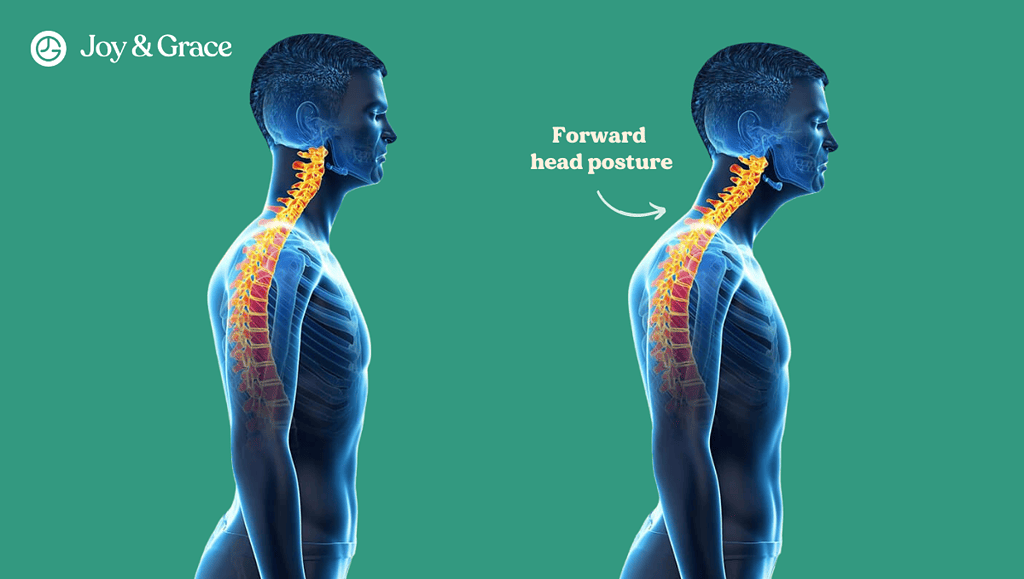
Yes, waking up with neck or shoulder pain when you have sleep apnea is possible. One mechanism behind the pain can be the disease forcing you to change your sleeping position. This could cause increased muscle tension, ultimately leading to discomfort or pain in the neck and shoulder areas.
The main reason why some people with sleep apnea adopt these abnormal positions is to keep their airways open. Neck pain associated with sleep apnea is believed to be caused by neck hyperextension. This occurs when a person tries to open their airway during apnea while sleeping. This may press on the nerves exiting the cervical spinal canal, which can cause or worsen cervical radiculopathy.
People with untreated sleep apnea are also prone to adopt the forward head posture or “anteriorization.” Maintaining this position for an extended period can strain your neck muscles and lead to neck pain.
Can Sleep Apnea Cause Neck Tension?
While no studies link sleep apnea with neck tension, forward head posture and neck hyperextension may cause neck tension.
Sleep apnea is also a form of breathing pattern sleep disorder. There is evidence linking breathing pattern disorders with neck pain. We talk more about that here.
Does Sleep Apnea Cause Neck And Back Pain?
We’ve already established that sleep apnea can indeed cause neck pain. But can it also affect our backs? Well, according to research, sleep apnea can, unfortunately, cause back pain as well.
A 2021 study found that obstructive sleep apnea can be associated with lumbar spondylosis, a common cause of lower back pain. Lumbar spondylosis occurs when the bones in the lower back (the lumbar spine) wear down. Additionally, the study found that women with obstructive apnea had a higher risk of vertebral fracture, which may present as neck and back pain.
Another study found that the severity of sleep apnea is directly related to the number of disc protrusions in lumbar spondylosis. According to the study, this may be due to genetics.
How Can I Make My CPAP Mask Headgear Not Hurt My Neck?

While the health benefits of using a CPAP machine are vast, dealing with headgear discomfort can be frustrating. Here are some easy tips to minimize how much your CPAP mask headgear hurts your head:
- Make sure your mask fits properly.
An ill-fitting mask can result in discomfort and pain, so it's crucial to ensure you have the correct size. With the right mask, you don’t need to put so much pressure on the headgear, reducing the chances of hurting yourself.
- Adjust the fit of the headgear.
The skin on the neck, face, and scalp is sensitive and can get hurt easily, especially when the pressure of the headgear is too tight. Ensure that your headgear is fitted so that it's snug but not too tight that it hurts your neck. We’ll talk more about this later.
- Adjusting the straps
Make sure you adjust the straps to the appropriate length, minimizing the tension on your neck. If the straps are too tight, they can cause significant discomfort, while if they are too loose, they can loosen or even fall off while you're sleeping.
- Add extra padding
Upgrading your headgear to padded straps can be a game-changer if you're experiencing neck pain. They help to cushion the straps around your neck, making it easier to tolerate them for extended periods.
- Re-position the headgear
Try moving the headgear to different positions on your head until you find a spot that feels comfortable to wear. Mind that the mask should not have been dislodged from your face.
- Replace your cushion regularly.
Remember to replace your cushion every three to six months. Over time, the cushion can lose its shape and start causing discomfort.
- Investing in a different headgear
If none of the above solutions work for you, it may be time to invest in a new, more comfortable headgear. Look for headgear that is designed specifically for individuals who have neck pain. Also, look for headgear made with high-quality materials.
- Incorporating neck stretches
Incorporating neck stretches into your routine can help alleviate pain, reduce tension, and increase the range of motion in your neck. Try basic neck stretches before bed, such as gently rolling your shoulders or tilting your head from side to side.
By following these simple tips, you can reduce the pressure and pain of your CPAP headgear, making it more comfortable to wear. If the problem persists, consult a healthcare professional for additional support.
How Tight Should The Headgear Be On A CPAP Mask?
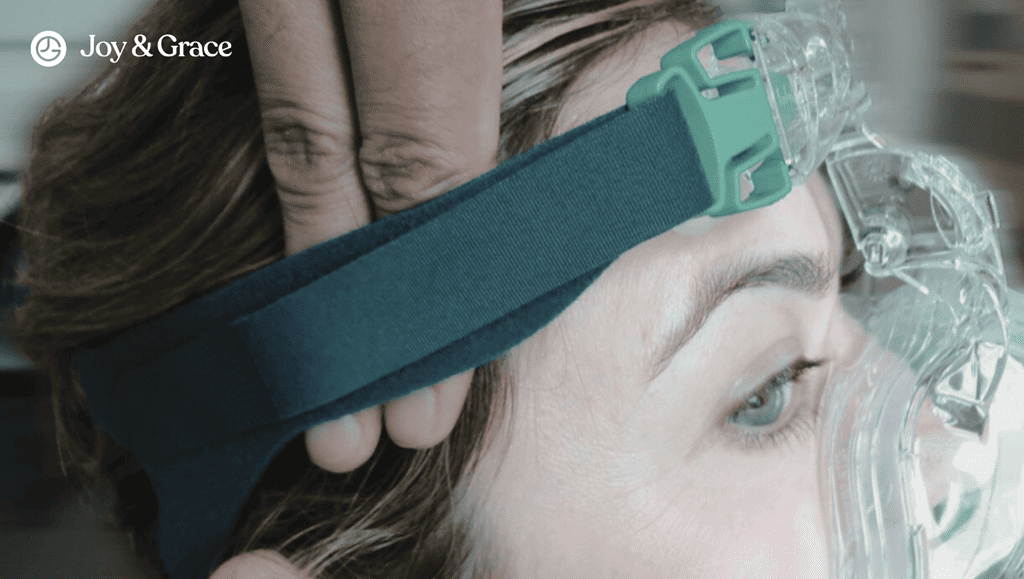
The perfect fit should provide enough support to keep the mask in place but should not be overly tight. After removing the mask, a good way to test whether your headgear is too tight is to check for any red marks or indents that remain on your skin. If there are marks, loosen the headgear slightly.
It's important to remember that overly tight headgear can also lead to mask leaks, reducing the effectiveness of your CPAP therapy.
To find the proper fit for your headgear, adjust the straps to fit securely without causing discomfort. Remember, you should be able to fit two fingers between the strap and your skin.
Next, make sure the mask is placed correctly on your face. Adjust the mask to fit securely but without applying unnecessary pressure. Remember that a proper fit may take a few attempts. Making small adjustments throughout the night is okay to ensure you remain comfortable.
How Can I Choose A CPAP Mask Based On My Sleep Position?
Here's a breakdown of different sleep positions and the CPAP masks that work best for each:
- Back sleepers
Sleeping on your back allows you to wear any type of mask, even a full-face mask style.
A full-face mask covers the nose and mouth, ensuring a steady airflow throughout the night. It also helps prevent air leaks caused by changes in head position during the night.
With that said, sleeping on your back can increase the risk of your airway collapsing despite the convenience of mask options.
- Side sleepers
Sleeping on your side is considered one of the best positions for sleep apnea. However, you may need help finding a comfortable mask.
Nasal pillow masks may be a good option if you sleep on your side. These masks are small and fit comfortably over your nose, and they rest higher than your pillow so you can breathe easily. Even if you turn your head while sleeping, the mask will still work properly and keep the air flowing to your lungs.
You may also use nasal masks. Nasal masks fit only over the nose, leaving the mouth free.
- Stomach sleepers
This can be a very uncomfortable position if you sleep with a CPAP mask. The mask can press on your face if you sleep on your stomach. This can result in air leaks, pain, and overall poor sleep quality. It may also cause you to adopt the abnormal neck positions mentioned earlier.
A nasal pillow mask is often the best option if you sleep on your stomach.
In addition to sleep position, other factors to consider when choosing a CPAP mask include facial hair, mask fit, and personal comfort. Be bold and try out different types of masks until you find the one that works best for you.
It's important to note that everyone sleeps differently, and there may be exceptions to these guidelines. It's always best to consult with a CPAP specialist to help guide you toward the right mask for your specific needs.
Takeaway
CPAP therapy is an effective treatment for sleep apnea but can have side effects like neck pain. The mask's weight, tightness, uncomfortable sleeping positions, and pre-existing medical conditions can cause neck and shoulder pain.
However, not all CPAP users experience neck pain due to CPAP therapy. Sleep apnea itself can cause neck pain due to abnormal sleep positions. To reduce CPAP neck pain, pick the right mask for you.
Remember, a good night's sleep is crucial for your overall health and well-being. Choosing the right CPAP mask can help you get the improved sleep you need to feel your best.







